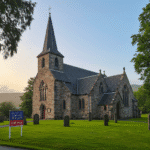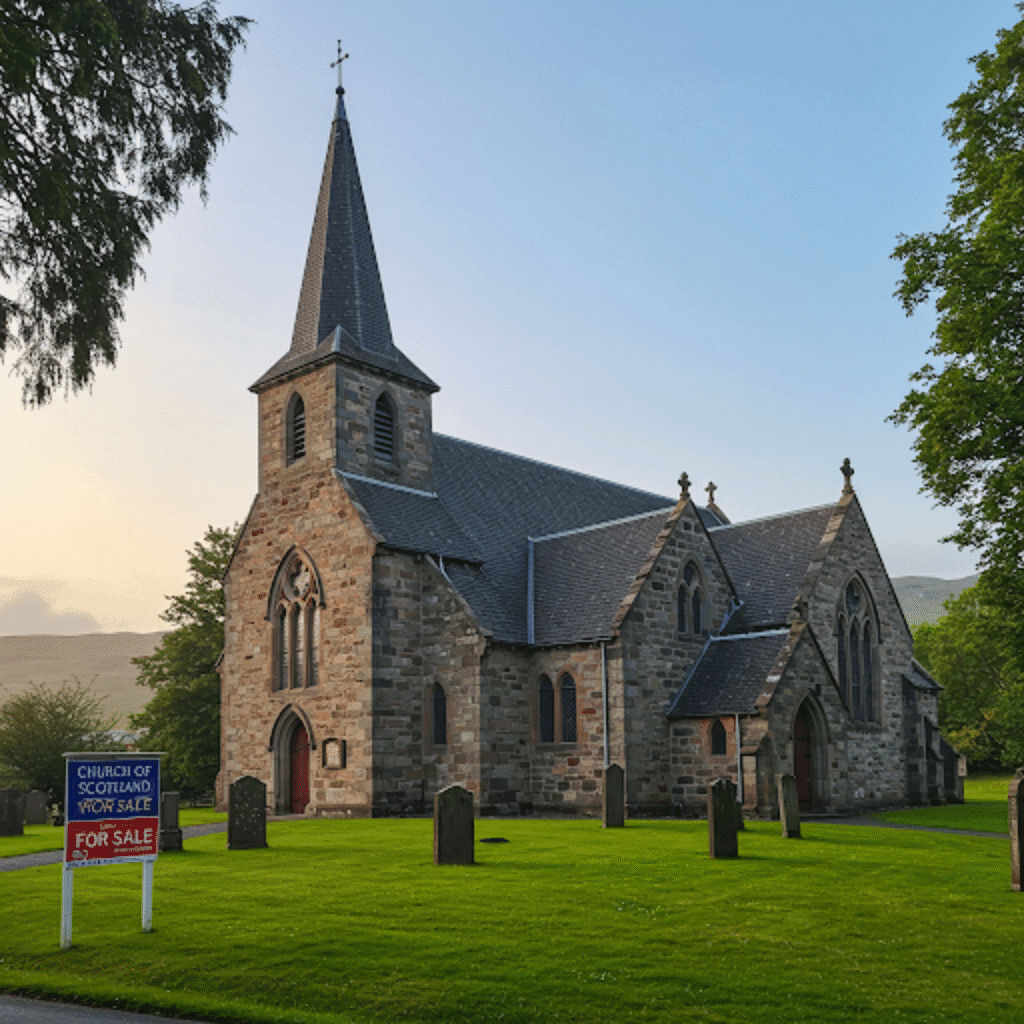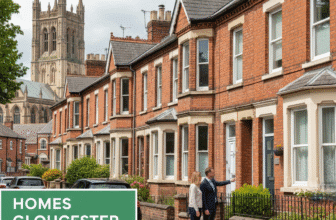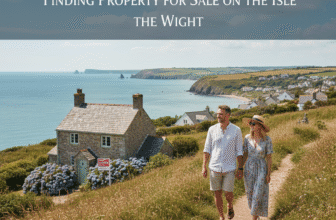
A Unique Opportunity: Exploring Church of Scotland Properties for Sale
Across the picturesque landscapes of Scotland, from bustling city centres to remote Highland glens, stand buildings steeped in history and architectural significance – the churches, manses, and halls of the Church of Scotland. For generations, these structures have been central pillars of their communities, witnessing countless baptisms, weddings, funerals, and Sunday services. However, changing times, shifting demographics, and the practicalities of maintaining vast, ageing estates mean that the Church of Scotland, like many institutions, is increasingly offering some of its unique properties for sale. This presents a fascinating, albeit often challenging, opportunity for buyers seeking a home, a project, or a commercial venture with unparalleled character and a deep connection to Scotland’s heritage.
Owning a former church building, a quaint manse, or a sturdy church hall captures the imagination. It’s a chance to become the custodian of a piece of local history, to inhabit spaces designed for contemplation and community, and often, to undertake a transformation that breathes new life into structures built with craftsmanship rarely seen today. But embarking on this journey requires more than just enthusiasm; it demands careful research, realistic expectations, and a deep understanding of the specific responsibilities and potential hurdles involved.
Why is the Church of Scotland Selling Property?
The decision for the Church of Scotland to sell its properties isn’t taken lightly. It stems from a complex interplay of factors reflecting broader societal changes and the evolving needs of the Church itself. Understanding these reasons provides context for potential buyers:

- Congregational Changes: Like many traditional denominations across the UK and Europe, the Church of Scotland has experienced a decline in active membership and attendance over recent decades. This can lead to congregations merging or closing, leaving some church buildings surplus to requirements for worship.
- Rationalisation of the Estate: The Church holds a significant property portfolio accumulated over centuries. Managing this extensive estate – including repairs, maintenance, insurance, and heating costs for large, often listed, buildings – is a substantial financial burden. Selling underused or redundant properties allows the Church to rationalise its holdings and focus resources more effectively.
- Funding Future Mission and Ministry: Proceeds from property sales are often reinvested into the Church’s ongoing work. This can include supporting existing congregations, funding new community projects, charitable activities, maintaining ministry in other areas, and ensuring the long-term sustainability of the Church’s mission.
- Maintenance Costs: Many church buildings are old, listed, and require specialist, often costly, upkeep. Deferred maintenance can become overwhelming, making disposal a pragmatic option, especially if a building is no longer actively used for worship.
- Shifting Ministry Models: Modern approaches to ministry sometimes favour more flexible, community-based facilities over traditional, large church buildings, leading to some older properties becoming less suitable for current needs.
It’s important to recognise that these sales are part of a strategic process managed centrally, often by the General Trustees of the Church of Scotland, who have a duty to secure the best value for the assets while considering the property’s past and future context.
What Types of Properties Become Available?
The portfolio of properties offered by the Church of Scotland is diverse, reflecting its historical footprint across the nation. Potential buyers might encounter:
- Redundant Churches: These are often the most iconic properties. Ranging from small rural kirks to grand city-centre edifices, they boast features like stained-glass windows, bell towers, vaulted ceilings, and intricate stonework. They offer incredible potential for dramatic residential conversions, art galleries, performance spaces, or unique business premises, but also represent the biggest conversion challenges.
- Manses: Traditionally the home provided for the parish minister, manses are typically substantial residential properties, often Victorian or Edwardian, located close to the church they served. They vary greatly in size and condition but are generally more straightforward to continue using as dwellings, though many benefit from modernisation. Their location is often prime within a town or village.
- Church Halls: Built for Sunday schools, meetings, and community events, these halls are usually more functional in design than churches. They offer large open spaces, basic kitchen and toilet facilities, and potential for conversion into homes, workshops, community centres, or business premises, often with fewer planning hurdles than full church conversions.
- Glebe Land: Historically, land was attached to a parish to provide income for the minister (the glebe). Parcels of this land, ranging from small plots to more significant acreage, occasionally come up for sale. Its potential depends heavily on location, planning regulations, and access.
- Other Buildings and Plots: Occasionally, other associated properties like church offices, caretaker’s cottages, or small plots of land adjacent to existing church properties might be sold.
Navigating the Purchase: Finding and Buying Church Property
Acquiring property from the Church of Scotland involves a process that can differ from standard residential or commercial transactions.
- Finding Listings: Properties are usually marketed publicly. Key places to look include:
- The Church of Scotland’s own property website or section.
- Major national property portals (like Rightmove, Zoopla) where appointed estate agents list them.
- Local estate agents, particularly in rural areas.
- Specialist websites focusing on unique or historical properties.
- The Sales Process: While some properties might be offered at a fixed price, many Church properties, especially redundant churches and desirable manses, are sold via a closing date system. Interested parties submit sealed bids (“offers”) by a specific deadline. The Church (usually via the General Trustees and their agents) is typically obliged to accept the highest offer, but may also consider the proposed use and the buyer’s ability to complete the purchase and manage the property responsibly. Conditional offers (e.g., subject to planning permission) may be less attractive than unconditional ones.
- Conditions of Sale: Church property sales often come with specific conditions or burdens written into the title deeds. These can significantly impact future use and must be carefully reviewed by a solicitor. Common examples include:
- Restrictions on Use: Prohibitions against activities deemed incompatible with the building’s former sacred nature, such as licensed premises (pubs, off-licences), betting shops, or venues for opposing religious practices.
- Burial Grounds: If the property includes a graveyard (common with older churches), the buyer usually inherits responsibility for its maintenance and must guarantee continued public access for relatives visiting graves. This is a significant ongoing liability. Sometimes the graveyard remains in Church ownership with rights of access across the sold property.
- Memorial Plaques: Requirements to retain internal or external memorial plaques.
- Architectural Features: Covenants relating to the preservation of specific architectural features, especially if the building is listed.
The Allure: Opportunities and Unique Appeal
Despite the potential complexities, the draw of owning a former Church of Scotland property is undeniable:
- Architectural Grandeur: High ceilings, large windows, intricate stonework, timber beams – these buildings possess character and a sense of space rarely found in modern construction.
- Historical Significance: Owning a building that has been a community focal point for decades, or even centuries, offers a unique connection to the past.
- Potential for Stunning Conversions: The large volumes and unique layouts of churches and halls allow for imaginative and breathtaking residential or commercial designs. Think mezzanine floors overlooking double-height living spaces, or studios bathed in light from gothic windows.
- Often Desirable Locations: Churches and manses were historically built in central or prominent locations within villages, towns, and cities, offering convenience and a sense of place.
- A Blank Canvas (Within Limits): While constraints exist, particularly with listed buildings, the internal spaces often provide significant scope for reconfiguration and personalisation.
Facing Reality: Challenges and Essential Considerations
Prospective buyers must approach these properties with eyes wide open to the potential difficulties:
- Conversion Costs and Complexity: Transforming a building designed for worship or community gatherings into a comfortable home or viable business is rarely cheap or simple. Costs for structural work, insulation, installing new services (heating, plumbing, electrics), creating internal layouts, and meeting building regulations can be substantial, often far exceeding standard renovations.
- Planning Permission and Listed Building Consent: Most redundant churches, and many manses and halls, are listed buildings (Category A, B, or C in Scotland). Any significant alteration, internal or external, requires Listed Building Consent from the local authority, in addition to standard Planning Permission for change of use. This process can be lengthy, complex, and uncertain, requiring detailed plans and potentially specialist heritage reports. Restrictions imposed by planners can impact design aspirations.
- Use Restrictions and Covenants: As mentioned, title deeds may carry restrictions that limit commercial uses or require ongoing maintenance of certain features or areas (like burial grounds).
- Maintenance of Historic Fabric: Older buildings require ongoing, often specialist, maintenance. Stone repairs, roof work, stained-glass window conservation – these demand skilled craftspeople and can be expensive.
- Energy Efficiency: Large volumes, solid stone walls, and single-glazed windows mean these buildings can be challenging and costly to heat efficiently. Upgrading insulation and glazing may be restricted by listed status.
- Community Sensitivity: Local communities often have strong emotional ties to their former church buildings. Buyers should be prepared for local interest (and sometimes scrutiny) regarding their plans. Engaging positively with the community can be beneficial.
- Burial Grounds: The legal and practical responsibilities associated with burial grounds cannot be overstated. This includes maintaining boundaries, ensuring safe access, grass cutting, and potentially dealing with unsafe headstones. It’s a perpetual obligation.
- Access and Parking: Some older, centrally located church properties may have limited or non-existent off-street parking or difficult site access, which can be a practical challenge for residential use or commercial viability.
Essential Advice for Prospective Buyers
If the dream of owning a piece of Scotland’s ecclesiastical heritage still burns bright, proceed with diligence:
- Thorough Surveys: Commission a full structural survey from a surveyor experienced with historic and ecclesiastical buildings. Don’t rely solely on a basic mortgage valuation. Understand the condition of the roof, stonework, timbers, drainage, and any signs of damp or structural movement.
- Specialist Advice: Engage professionals early on. You’ll likely need:
- A solicitor experienced in handling properties with complex titles, burdens, and listed building status.
- An architect or architectural technologist with proven experience in converting historic or listed buildings. They can advise on feasibility, design possibilities within planning constraints, and likely costs.
- A planning consultant might be helpful for complex applications.
- A quantity surveyor can provide detailed cost estimates for the conversion.
- Budget Realistically: Get detailed quotes for conversion work. Include a substantial contingency fund (at least 20-30% of estimated costs) for unforeseen issues, which are common in old buildings. Factor in the costs of professional fees, planning applications, and potentially temporary accommodation during works.
- Understand Planning Policies: Research the local authority’s planning policies regarding change of use, listed buildings, and conservation areas. Have pre-application discussions with the planning and conservation officers to gauge the feasibility of your ideas before committing significant funds.
- Investigate Burdens and Responsibilities: Ensure your solicitor fully explains all title conditions, burdens, and responsibilities, particularly concerning burial grounds, access rights, and use restrictions.
- Community Engagement: Consider engaging with the local community council or heritage groups about your plans, especially for prominent buildings. Addressing concerns early can smooth the planning process.
A Unique Legacy
Buying a property from the Church of Scotland is undeniably more complex than a standard purchase. It requires patience, deeper pockets, a willingness to navigate bureaucracy, and a genuine appreciation for the building’s heritage. However, for the right buyer with vision, resources, and dedication, the reward is immense: the opportunity to create a truly unique home or business within a building of extraordinary character, preserving a piece of Scotland’s architectural and social history for future generations. It’s a chance not just to buy a property, but to become part of its ongoing story.







